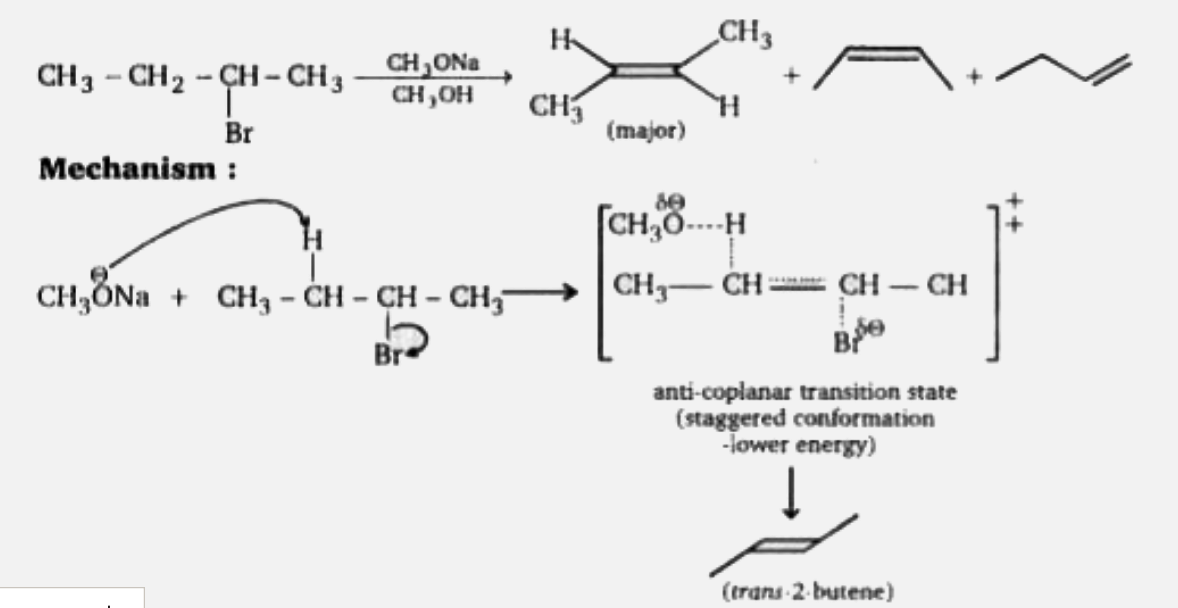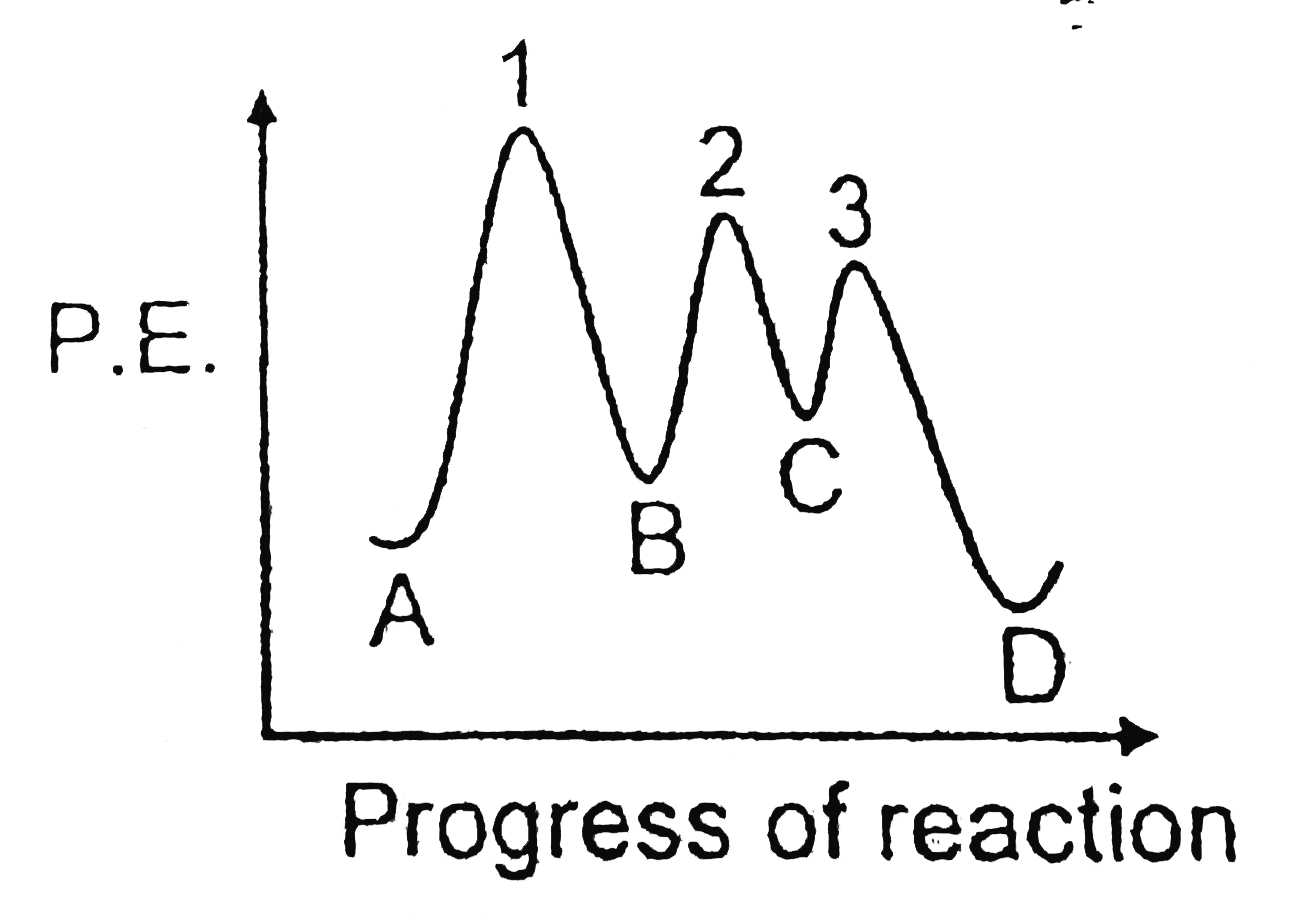Consider the potential energy diagram given below

(X) Name the positions A-D
(Y) Answer the following quesitons :
(i) Both reacti0n pathways are :
(ii) Which step is the determining step (RDS) ?
(iii) Which product is most stable ?
(iv) In accordance with Hammonds postulate, exothermic reactions tend to have Solution in Telugu
early transition states that are reactant - like
late transition states that are reactant - like
early transition states that are product - like
late transition states that are product- like.
The correct Answer is:A, B, C, D
Basic information
Topper's Solved these Questions
- BOOK - MS CHOUHANCHAPTER - ALKYL HALIDES (SUBSTITUTION REACTIONS)EXERCISE - LEVEL-241videos
ALKYL HALIDES (SUBSTITUTION REACTIONS)
- BOOK - MS CHOUHANCHAPTER - ALKYL HALIDES (ELIMINATION REACTION) EXERCISE - LEVEL-225videos
ALKYL HALIDES (ELIMINATION REACTION)
- BOOK - MS CHOUHANCHAPTER - AMINESEXERCISE - Level-21videos
AMINES
Similar Questions
The order of the nucleophilicity of F−,Cl−,Br−andI− in protic solvents is
03:17View SolutionComprehension
E2 raction → Elimination bimolecular
In the general mechanism of the E2 reaction a strong base abstract a proton on a carbon atom adjacent to the one of the leaving group. As the abstracts a proton , a double bond forms and the leaving group leaves.

Identify the rate ofreaction of given compounds in E2 reaction:
 02:42View Solution
02:42View SolutionFive amine syntheses are outlined below. In each reaction box enter a single letter designating the best reagent and conditions selected from the list at the bottom of the page.

 View Solution
View SolutionEnergy profile diagram for an exothermic reaction. Aoverset(1)toBoverset(2)toCoverset(3)toD , is given below the step/s which is/are not rate determining for forward reaction?
02:47View SolutionConsider the pathway of a well known organic reaction Which step is rate determining step?
05:01View SolutionDraw an energy profile diagram for a three step reaction in which first step is slowest and last step is fastest. (Assume that reaction is exothermic)
View Solution
Consider the above reaction and answer A to E.
Which step is rate determining step?04:55View SolutionConsider the potential energy diaram given below (X) Name the positions A-D (Y) Answer the following questions . (I) Both reaction pathways are. (II) which step is the rate determine step? (III) which product is most stable ? (iv) In accordance with Hammonds potulate , exothermixc reaction tend to have
03:07View SolutionThe following diagram represents the energy profile diagram for a two-step reaction. Calculate the ratio of change in heat energy involved in step I to step II.
 04:31View Solution
04:31View SolutionIn a multistep chemical reaction, which elementary step is considered as the "rate determining step"?
02:25View SolutionA chemical reaction proceeds into the following steps
Step I, 2A⇔X fast
Step II, X+B→Y slow
Step III, Y+B⇔ product fast
The rate law for the overall reaction is02:42View Solutionनिम्नलिखित अभिक्रियाओं:
(i) A→B,ΔG∘=250kJmol−1
(ii) D→E,ΔG∘=−100kJmol−1
(iii) F→G,ΔG∘=−150kJmol−1
(iv) M→N,ΔG∘=150kJmol−1
में से किसका साम्य स्थिराक सबसे अधिक हैं04:19View Solution_?_DREQ, GUHT, JXKW
03:05View SolutionA chemical reaction proceeds into the following steps Step I, 2A hArrX fast Step II, X+B rarr Y slow Step III, Y+B hArr product fast The rate law for the overall reaction is
04:19View Solution
Energy profile diagram for an exothermic reaction. A1−−→B2−−→C3−−→D, is given below the step/s which is/are not rate determining for forward reaction?06:55View SolutionConsider the pathway of a well known organic reaction Which step is rate determining step?
02:50View Solution
